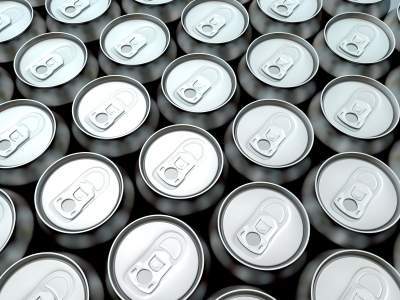Ball has published its sixth biennial sustainability report, covering calendar years 2016 and 2017, which details how it addresses systemic challenges in the areas of circular economy, climate change, water stewardship and responsible sourcing, as well as its bold new science-based greenhouse gas emission reduction target.

Image: Ball provides packaging solutions for beverage, personal care and household products customers. Photo: courtesy of Graphics Mouse / FreeDigitalPhotos.net.
Ball president and CEO John Hayes said: “We remain committed to improving our operational sustainability performance and in making the can the most sustainable package in the supply chain.
“To further our progress, we are setting a science-based greenhouse gas emission reduction target. Establishing this target communicates our commitment to engaging our employees and our supply chain in the transition to a low carbon economy.”
In line with the level of decarbonization required to keep the average global temperature increase below 2 degrees Celsius compared to pre-industrial temperatures, Ball is committing to reduce its absolute Scope 1 and 2 GHG emissions by 27 percent by 2030 compared to a 2017 baseline.
Per million dollars of value added, this equates to a 58 percent reduction of our carbon intensity over the same period. Additionally, Ball strives to reduce GHG emissions across the value chain – from mining, refining, smelting, casting and rolling, to its manufacturing, logistics and end-of-life recycling – by 25 percent by 2030.
To achieve these targets, the company will follow a three-pronged approach: increase efficiency by saving energy and materials; grow renewables through the purchase of renewable energy; and cut embedded carbon by working with partners to reduce upstream impacts.
In addition to establishing its greenhouse gas reduction target, Ball also achieved a number of sustainability accomplishments during the reporting period:
Reused or recycled 64 percent of the total waste generated, and 39 of its 88 packaging manufacturing plants worldwide achieved zero waste to landfill status by year-end 2017.
Constructed state-of-the-art, sustainable beverage can manufacturing plants in Goodyear, Arizona, and Madrid, Spain.
Saved approximately 34 million kilowatt hours of electricity and 4 million watt hours of natural gas, resulting in 9900 metric tons less of GHG emissions.
Launched STARcan, a next-generation beverage can. If we were to switch our entire production volume of 33-centiliter and 12-ounce standard cans to the STAR format with a weight well below 10 grams, we would save approximately 30,000 metric tons of metal, or the equivalent to nearly 200,000 metric tons of GHG emissions.
Reduced aluminum usage in our beverage and aluminum aerosol packaging businesses by 7,700 metric tons in 2017, which equates to saving 58,000 metric tons of GHG emissions, or the emissions of 12,400 U.S. passenger vehicles per year.
Employees contributed more than 38,000 volunteer hours and donated $5 million in charitable donations in partnership with The Ball Foundation, as well as in-kind product donations for disaster relief, employee donations and the corporate match.
Ball supplies innovative, sustainable packaging solutions for beverage, personal care and household products customers, as well as aerospace and other technologies and services primarily for the U.S. government.
Source: Company Press Reelease
